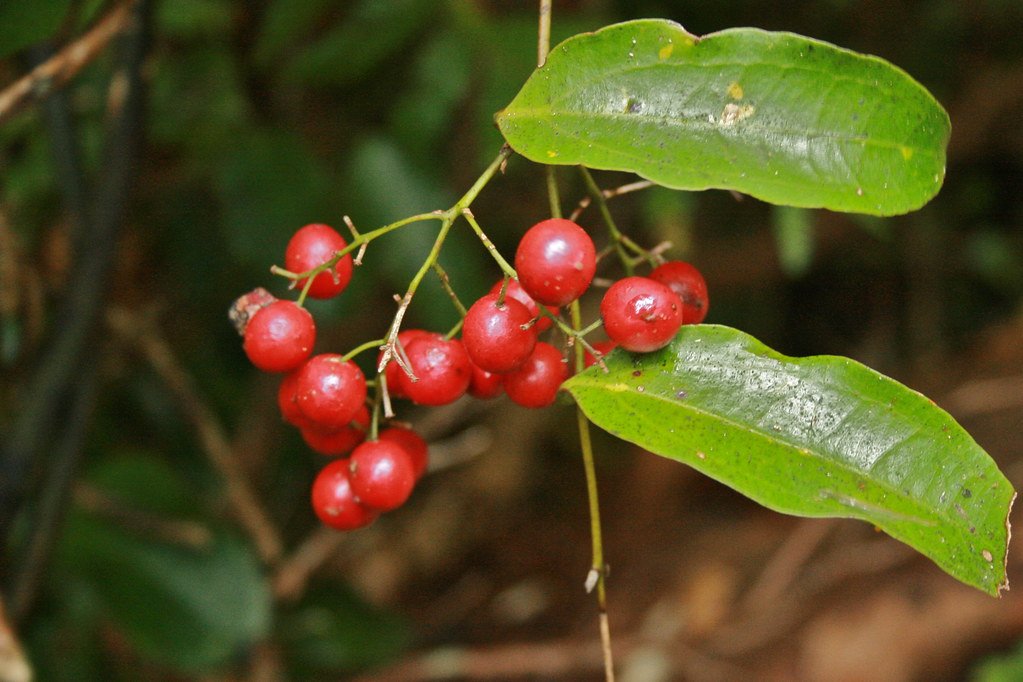Plants and Trees to eat in an Emergency Situation in Aotearoa
When all your basics of survival needs are met, it is time to source nutrition. Meat is pound for pound the best bang for your buck but requires the most amount of energy to acquire if you have no projection weapon available.
Traps and snares are easy to learn and require minimal energy output also. But patience and an understanding how small animals react and think takes a bit of practice; a torn apart trap or no animal sign all together can be a major morale drop. Having the knowledge of readily available plants, berries and insects can be great for confidence.
When all else fails and there are no bugs, fish or shellfish readily available we have our plants. Packed full of protein, essential minerals and vitamins you can’t go wrong with a survival diet on plants supplemented with meat if you're lucky.
Plant knowledge is integral to survival, they provide shelter, building materials, rope, fire lighting material, healing properties, spiritual properties, nutrients and sustenance for energy.
It is important to note that all the wild weeds growing in your back yard and on the fringes of the native bush are some of the most nutritious plants on earth. They contain a potent amount of micronutrients which are vital to wellbeing, disease prevention and healthy development. Supermarket foods tend to be grown in soils that have been stripped of minerals over the years due to mass producing, and are nutrient deficient. Not to mention covered in pesticide sprays and chemicals.
In Aotearoa, the best wild vegetable foods for survival are those which provide a large carbohydrate feed, easy to identify and are common place. Below are 4 Native plants you could find and eat in an emergency situation. (See below about our personal view on harvesting natives for regular food)
Mamaku (Cyathea medullaris) Black Tree Fern

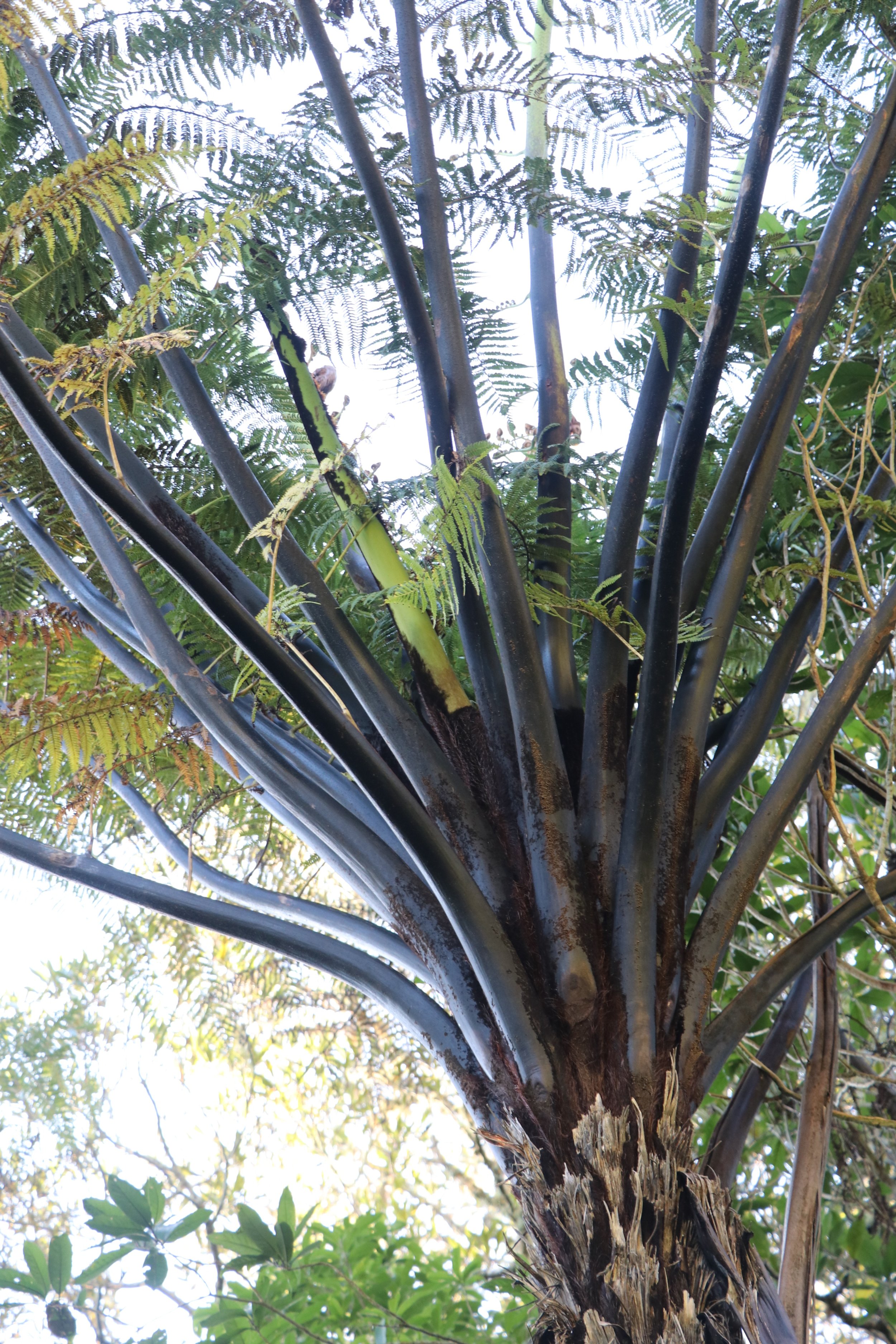
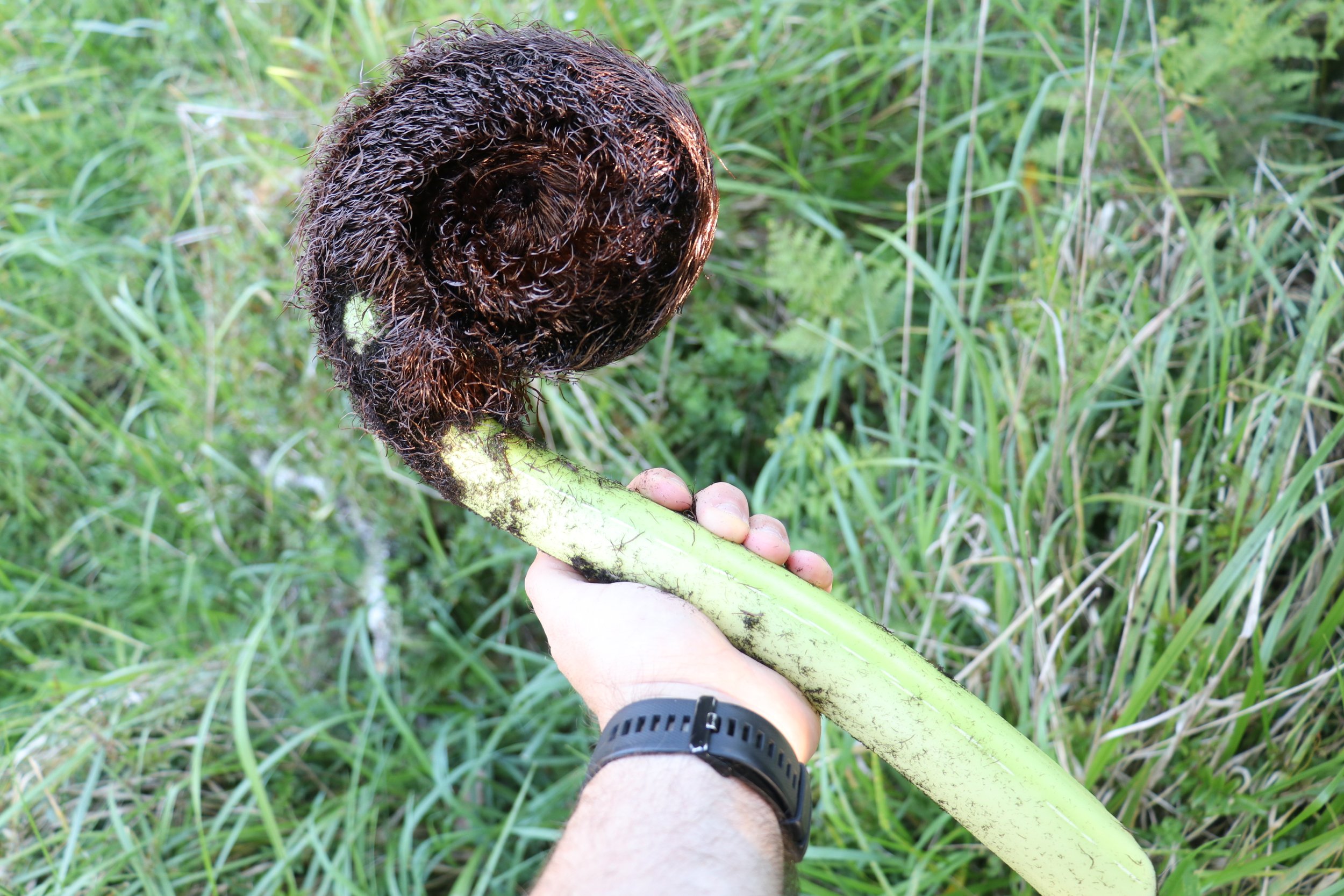
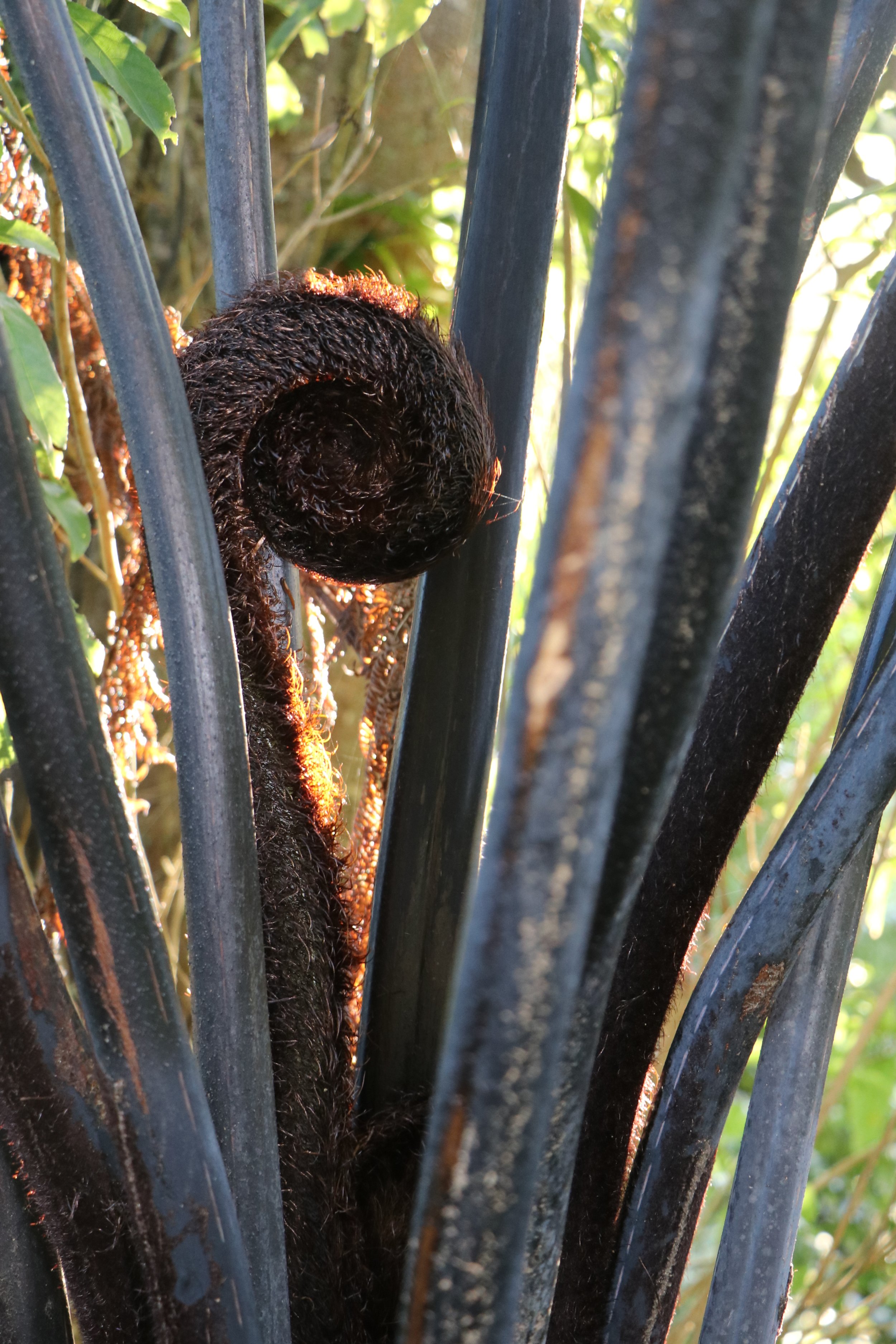
Mamaku is a symbol of new life, by far the largest of our ferns and fastest growing, one of the largest ferns in the world.
How to spot it? Has hexagonal shaped scars once leaves have fallen off, both the trunk and base of the fronds are black with furry hairs.
Part eaten. The uncurled parts of the new shoots or the ‘koru’ are eaten. They are covered in a mass of furry brown hairs that can easily be rubbed off. What’s left is a green vegetable. Peel the hard skin off and either steam, boil or fry it up. Best eaten cold or mixed with other veggies. If you eat it warm be prepared for a mass of mucilaginous goo to explode in your mouth.
Notes: You can also eat the core of the trunk, all of about 50cm down from where the young fronds grow. You need to strike it with a knife several times and allow the very bitter red gum to escape over a few hours. Once the trunk is cut the tree cannot regenerate. I highly recommend only ever eating the trunk if actually needed in a survival context. I will very seldom ever take a new frond shoot for survival workshops and if so always from a different area than the last.
Nikau Palm (Rhopalostylis Sapida)
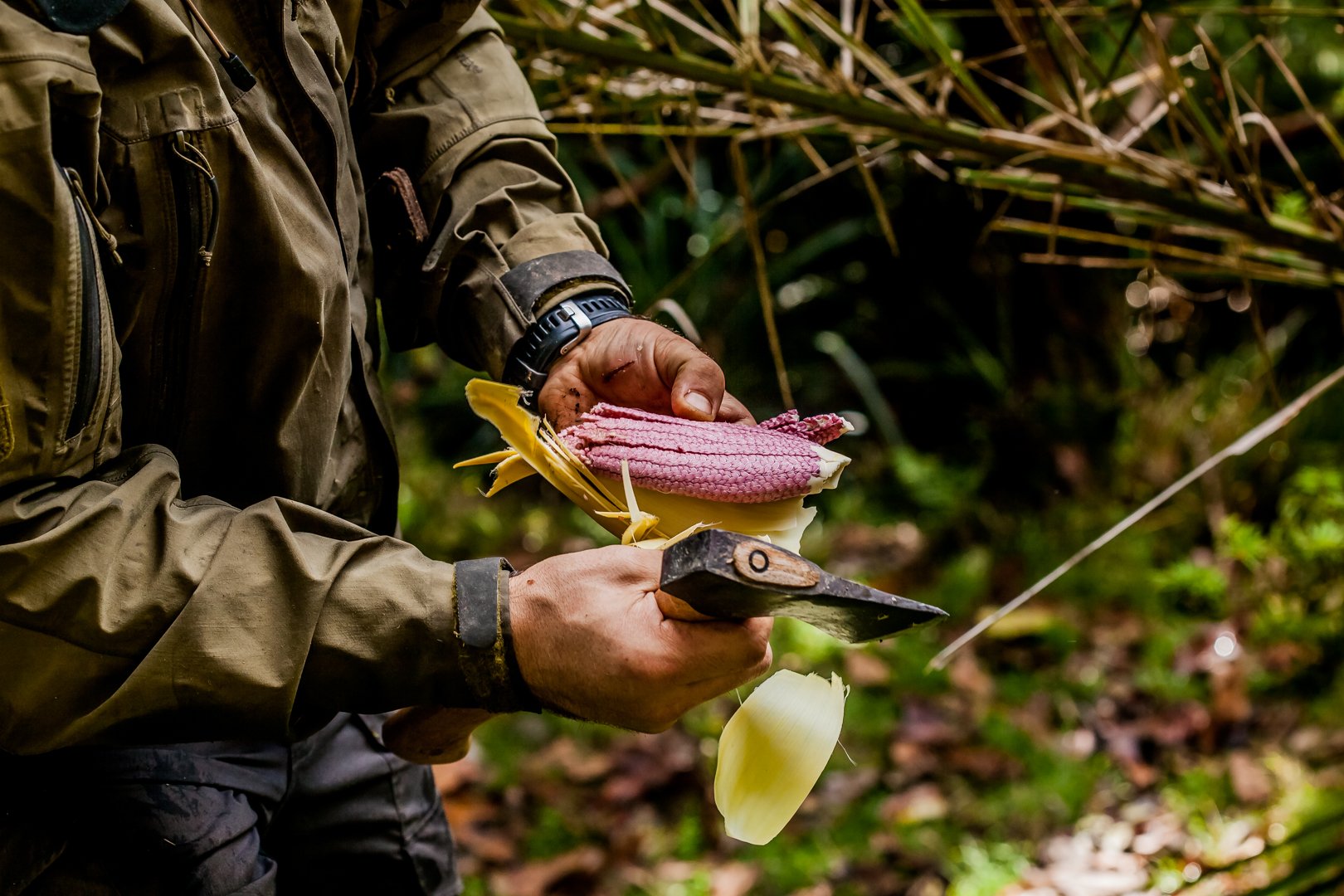

Rhopalostylis refers to the club or bulbous shape of the trunk where the flower lives. Sapida refers to the savoury taste of the immature flower. Nikau is our only native palm and is the most southernmost palm tree in the world.
How to spot it? Circular leaf scars on the straight trunk which can reach up to 10m high. Nikau’s flowers are a beautiful pink which then create green berries and eventually turn into red berries.
Part eaten? The immature flower heads can be found when the bulbous shaped base of the leaf falls off or you can pull it off early. The immature green berries can also be eaten, once red they are too dense to be palatable.
The heart of the Nikau can be eaten; this is the area where the new growth is.
I have eaten this forbidden feed once; myself with a few other men discovered the heart is actually one of the most delicious foods in our native bush when you are hungry. A very large and tasty, carbohydrate meal. If you don’t have a good tool such as an axe or machete the physical output required to cut one down and hack out the soft heart from its hard shell is very exhausting. Especially when you have no energy.
Do not do this unless you are in a survival situation. It kills the palm and they are very slow growing, sometimes taking up to 20 years to show a trunk.
Fun facts. If you are lost and all else fails, at least you can sit in the Nikau frond and use it as a toboggan to race down a nearby hill for morale.
Kareao/ Pirita (ripogonum scandens) Supple Jack


One of the worst experiences in my life is carrying a large stag on my back down into the wrong re-entrant only to succumb to a couple hundred impenetrable metres of twisted Supplejack vines. Needless to say my rifle was thrown, the deer was thrown and swear words were thrown. I now religiously hunt with a pair of secateurs.
How to spot it: Supplejack grows all over New Zealand and you should not have to look far in our native bush to find its vines, scrambling up, down and over in a huge beautiful tangled mess.
Poisonous look-a-like? Tree tutu (Coriaria arborea) will ruin your day if you eat its berries or young shoots. Tree tutu, like most of our natives has medicinal uses, do not attempt this unless you know what you are doing.
Identification help:
Supplejack Berries
Tutu Berries
FUN FACT: I once read of a guy who mistook tutu for supplejack; his seizures were so violent he dislocated his arm. Tutu is also responsible for killing an elephant from a travelling circus back in the 1950’s. It strongly resembles Supplejack, however can be distinguished by its tree like structure and the berries are much different. A quick google image search of the two will present the differences for you. Always be 100% certain the plant you are ingesting.
Part eaten: Young fresh tips of Supplejack are known as bush asparagus and taste similar to asparagus. The red berries are rather tasteless and the seeds can be softened up to become palatable when boiled. There is water in the vine that can be drunk; long pieces can be cut and laid out on a slope with a collection container at the bottom. A little time consuming but you can speed the process up by cutting shorter sections and blowing the water out.
Ti Kouka (Cordyline species) Cabbage tree
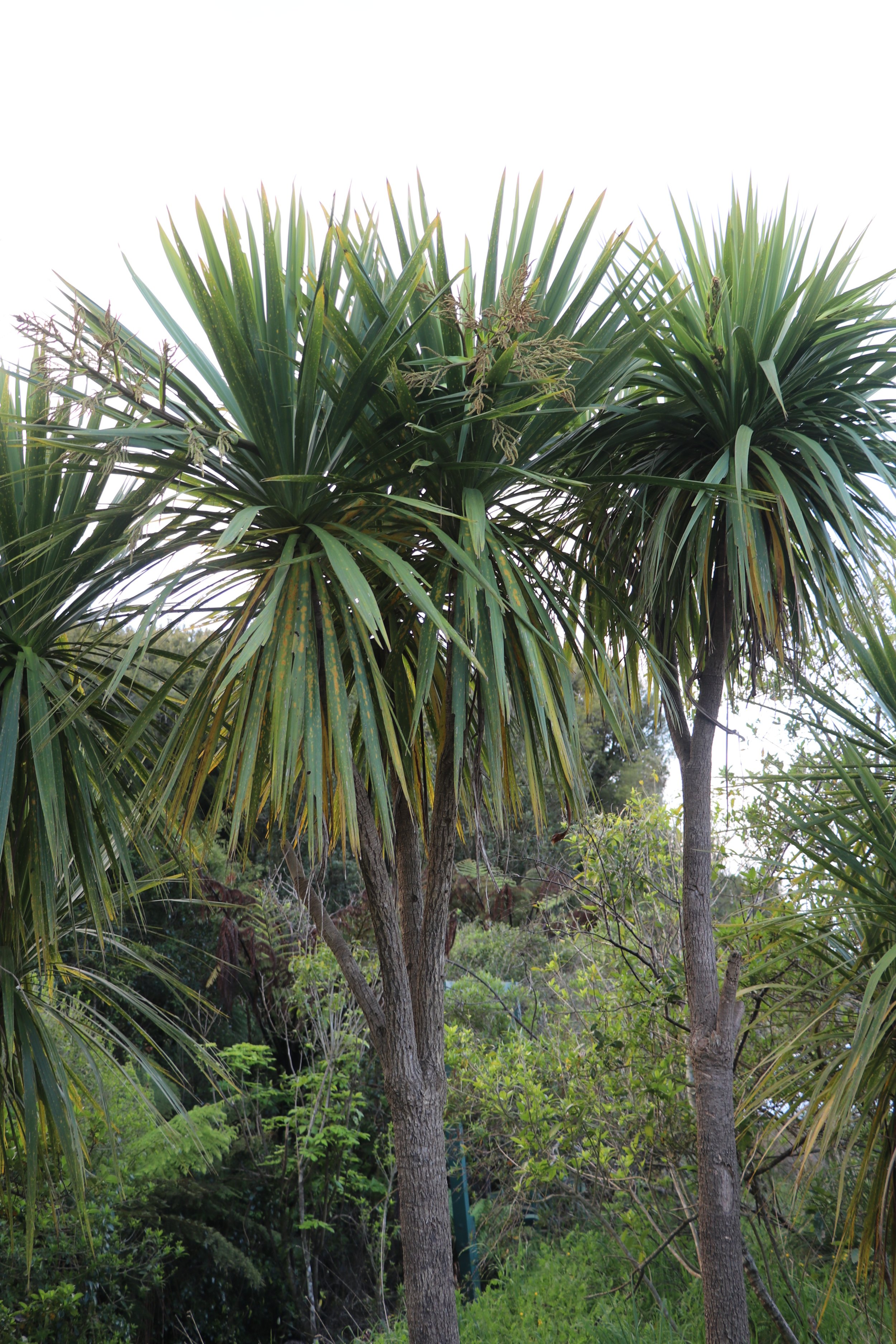
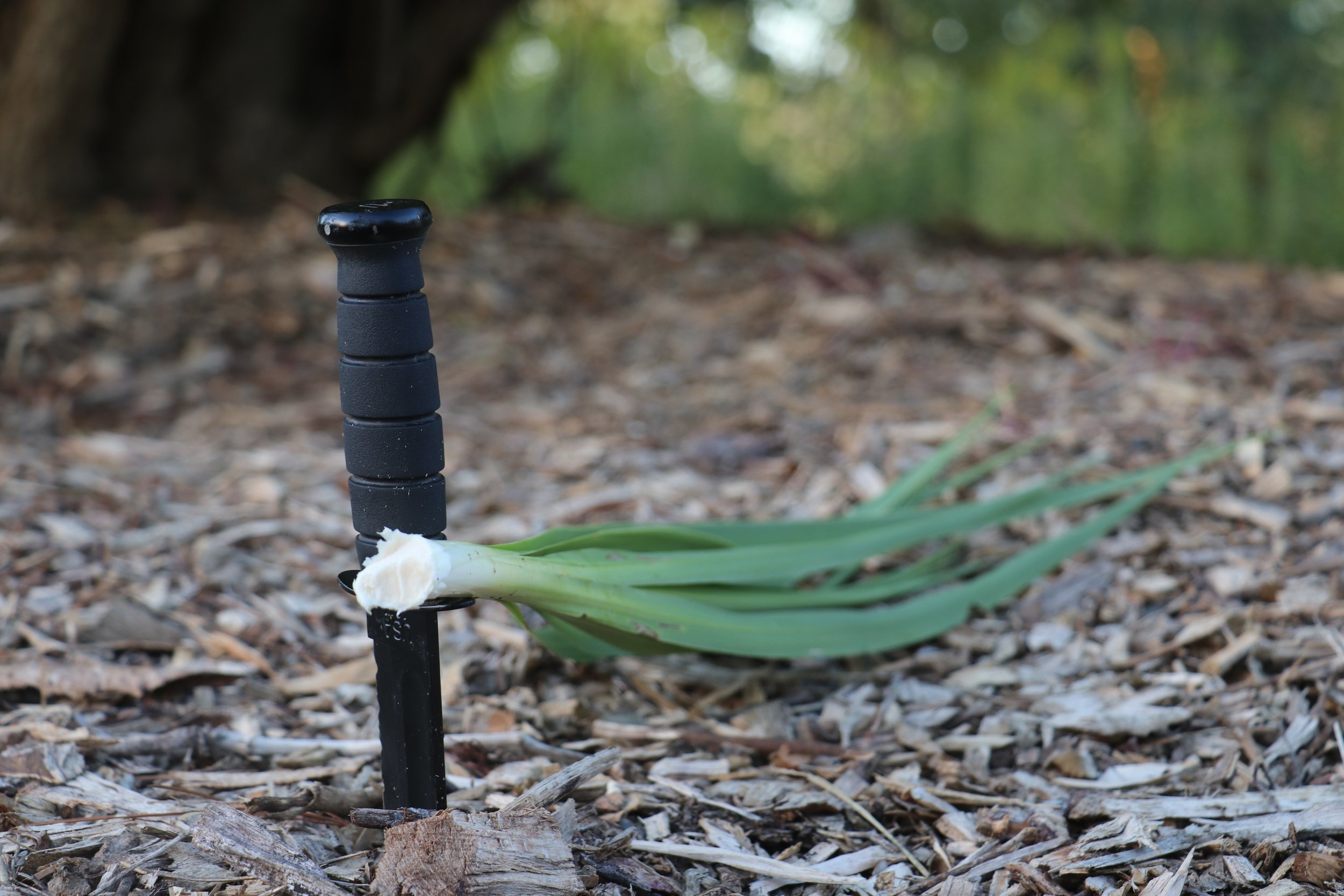
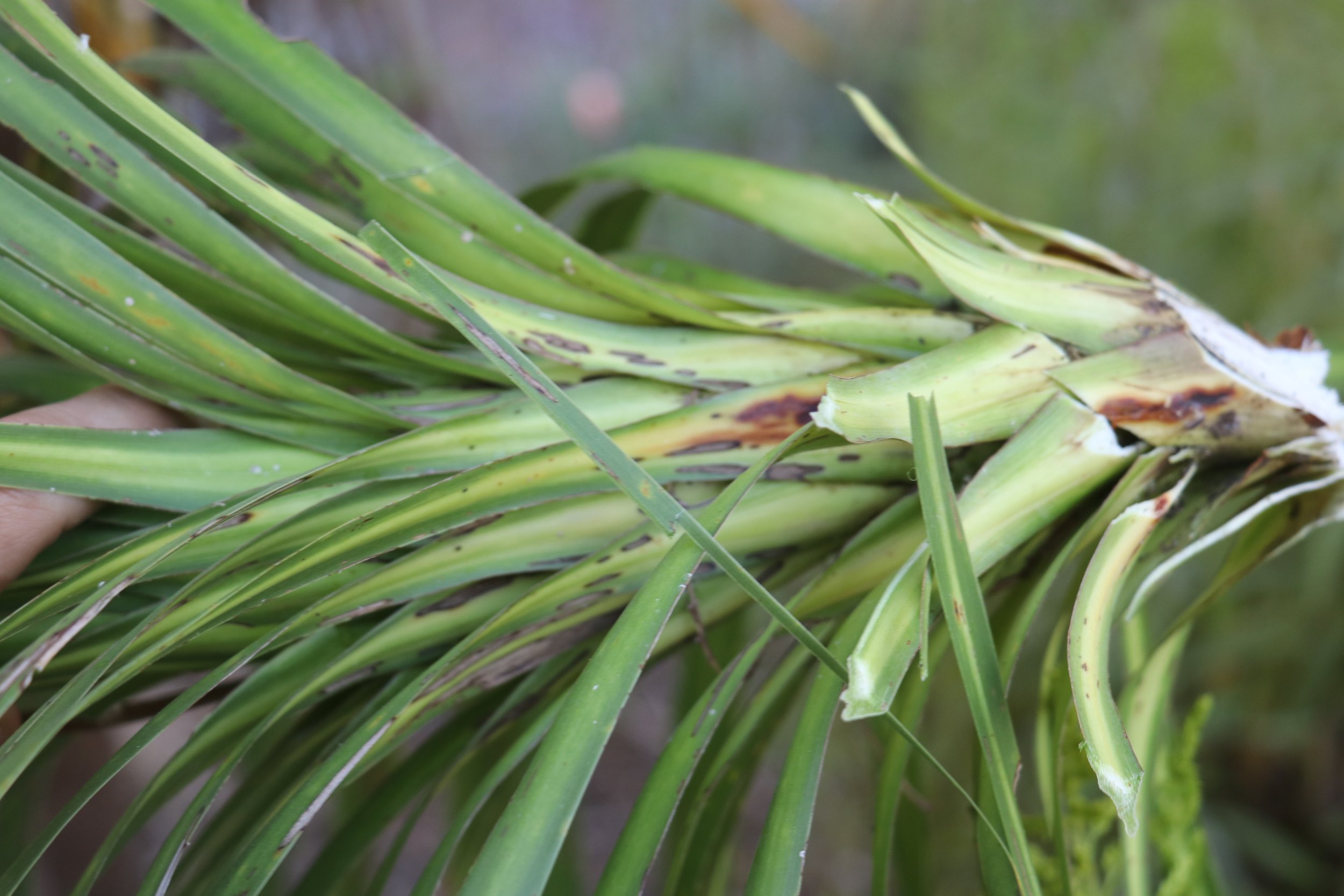
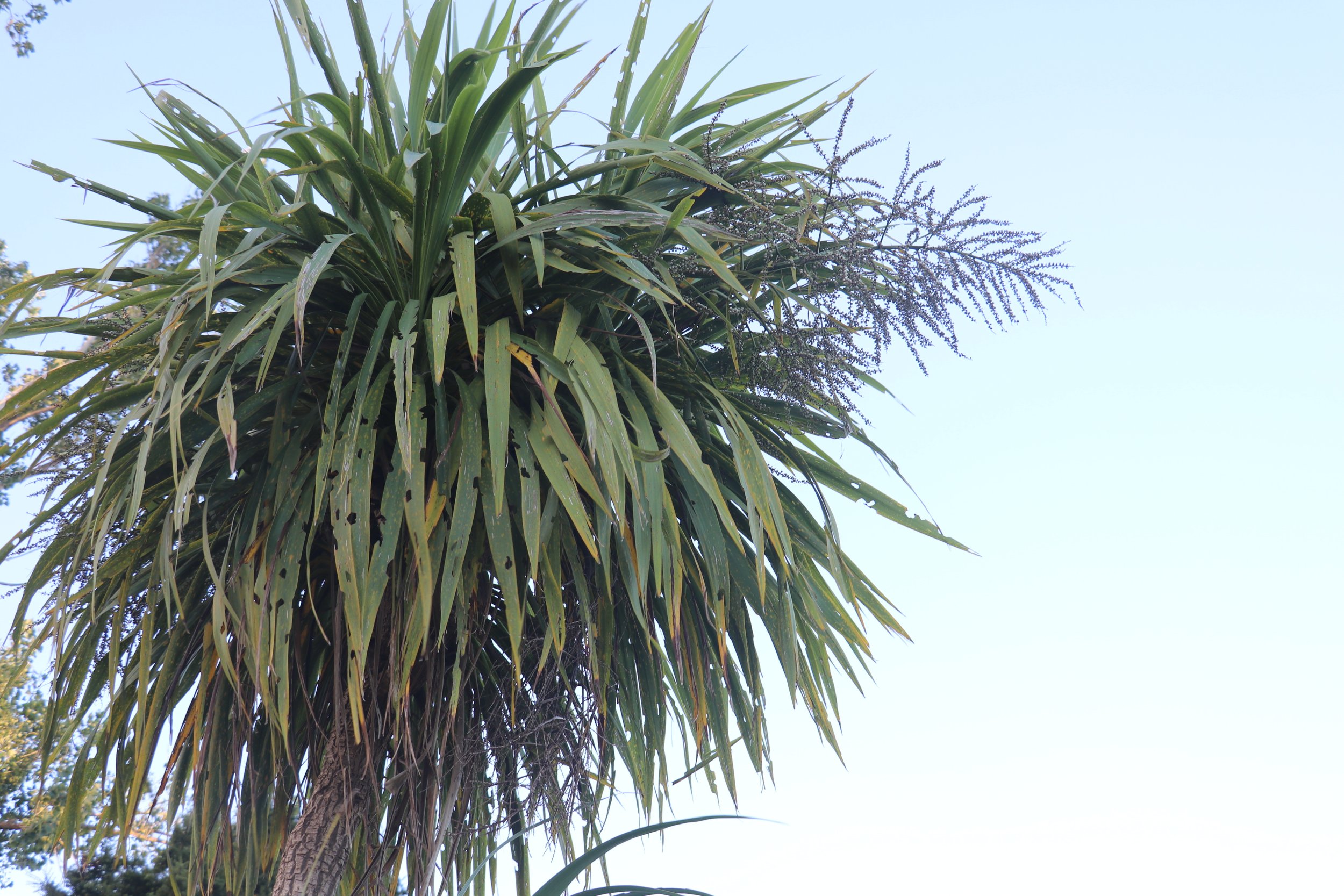
Ti Kouka is actually from the Asparagus family, this family also gives us Agave which is a sugar alternative, hence the sweet taste it contains. You can spot this tree all throughout New Zealand with its long straight and branching trunks exploding with balls of flax like leaves. It was an important food source for Maori and European settlers. It is one of the first trees to grow back after forest fires. Another native that I would only use if needed or if harvested sustainably.
Part eaten: Apparently in spring the roots are the sweetest right before it goes to flower. I can’t bring myself to rip a whole tree out unless I am actually hungry.
When cabbage tree branches are cut, more will grow in replacement. The most sustainable way to try this plant is by reaching inside the ball of leaves for the central shoot; cut this out then peel the harder leaves off to expose a pale looking and sweet tasting ‘heart’ of the shoot.
Notes: The leaves are highly flammable and make good kindling even when slightly wet. Interestingly enough early settlers used to make chimneys out of Cabbage tree trunks due to their fire resistant properties. You will often see these trees still standing after forest fires have torn through an area.
Wild Weeds
These weeds are some of the most nutritious plants on the planet. They are free and non-native so fill your salad bowls at home. Generally the plants on the outskirts of the forest are the most healing and nutritious plants. They are healing the land disturbed by man, softening and oxygenating the soil and creating humus or ‘life’ in the soil.
A point to note is that most of the plants below are relatively bitter to the taste. Which is a very good thing; bitterness promotes bile flow and powerful enzymes in gastric juices. Gastric juices help break down proteins and meat, this is good especially if you are eating lots of meat. After seeing survival students poo green from eating only mussels and goat meat it makes you wonder how an all meat diet is very much good for you.
Plantain (Plantago Lanceolata, Plantago Major)
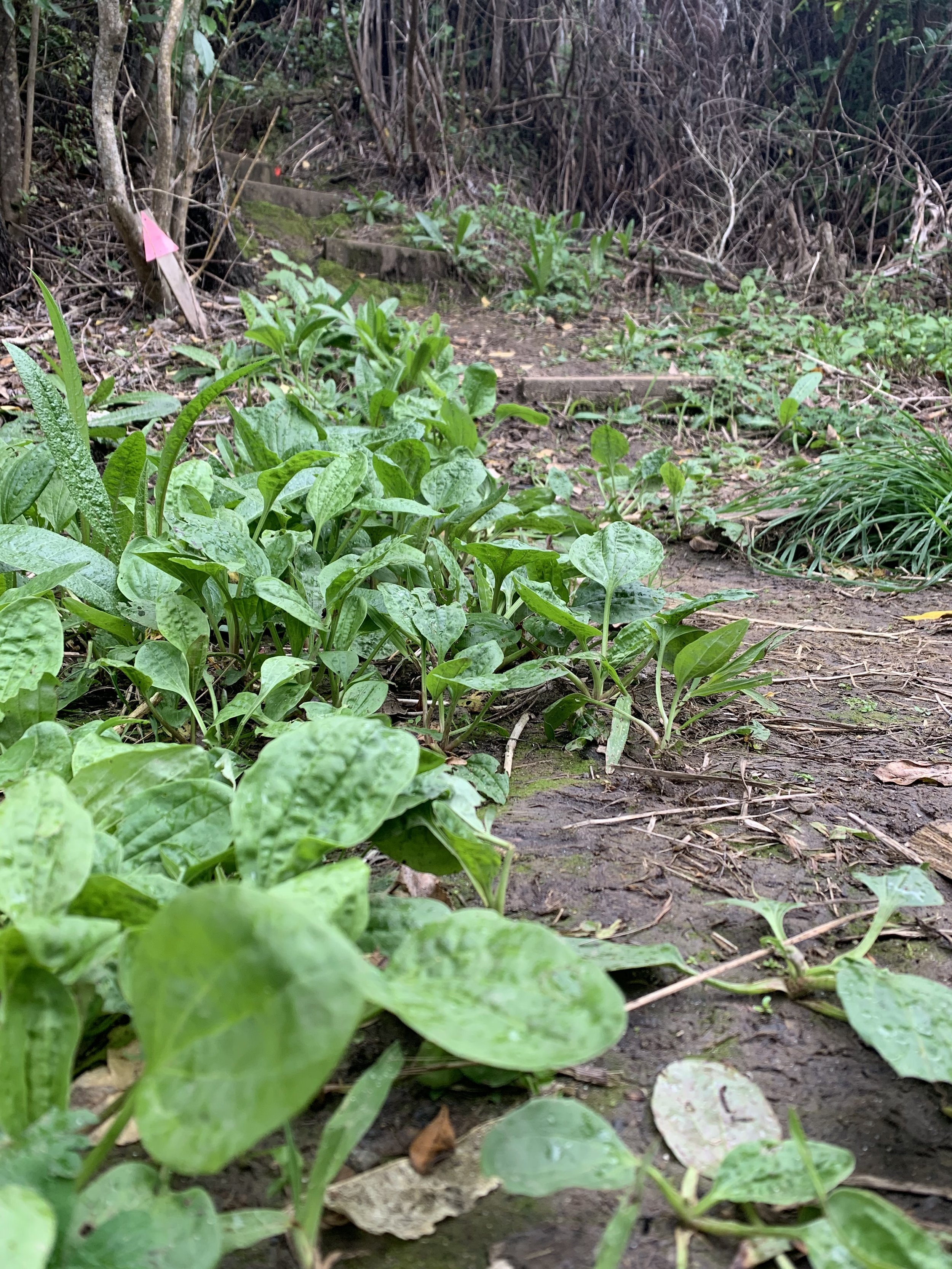
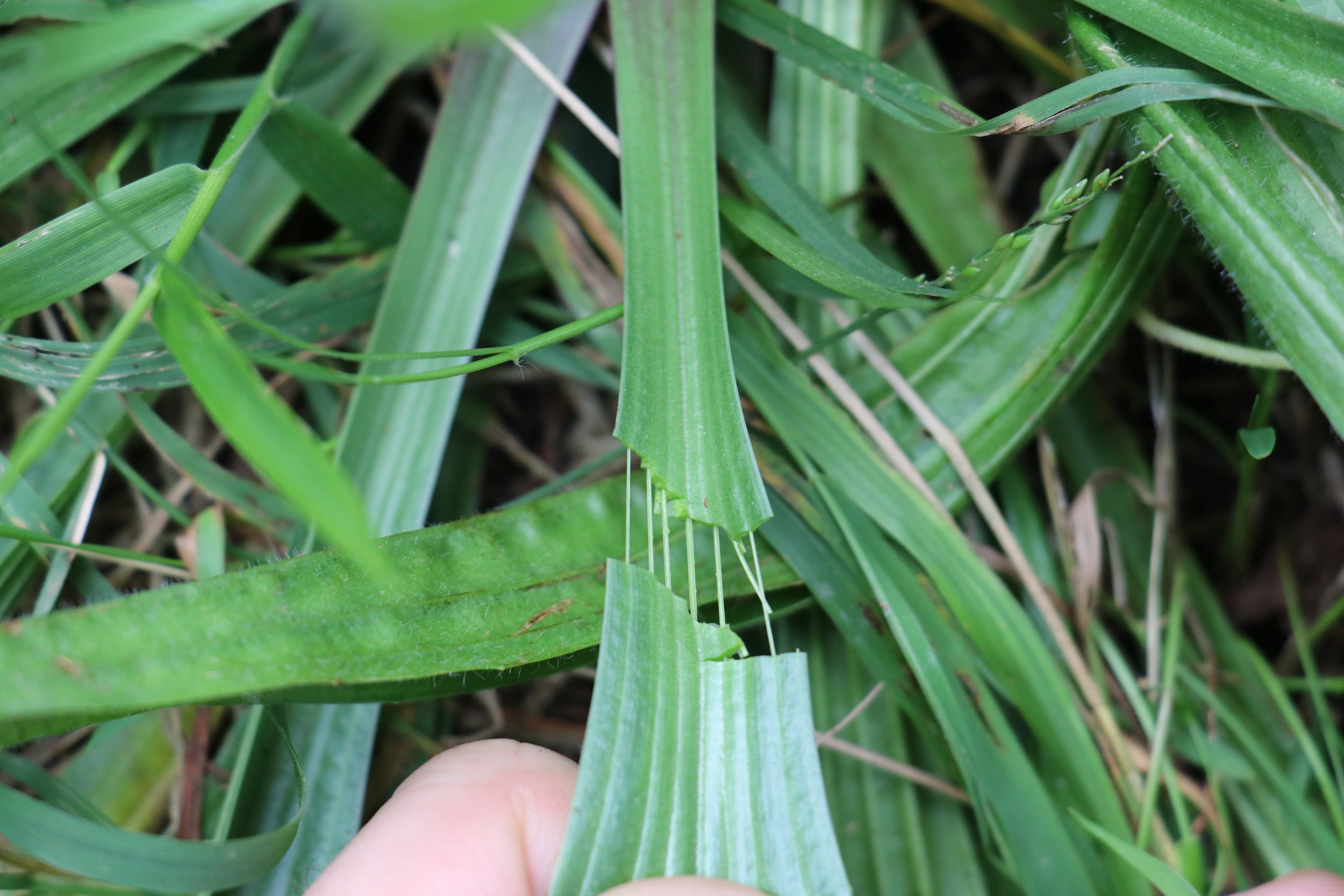
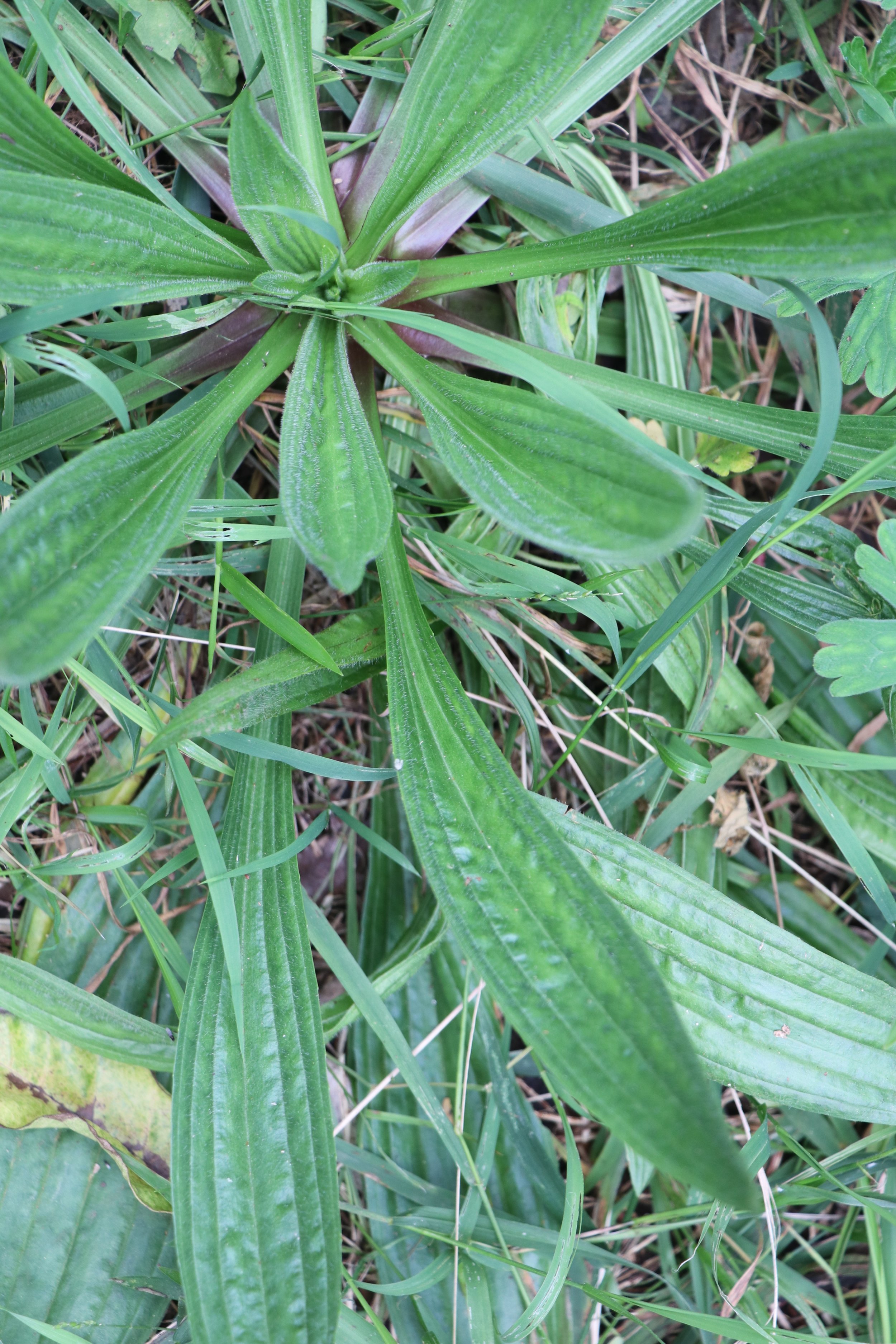
Often very overlooked in our backyards and on the forest edge is plantain. It is bitter, nutrient dense and the seed heads provide psyllium husk a great natural fibre for digestion.
Where to spot it? There is a reason the Native Americans called this plant the ‘white man’s foot’. When the colonials came in and started shifting soils to build on, make roads and plough the land. Plantain was one of the first plants that show up. These ‘colonial plants’ will show up anywhere soil has been disturbed. The reason being they are usually deep rooting to bring nutrients back to the surface and turn the clay back into life giving topsoil. This means they also contain a powerful amount of nutrients themselves.
Part eaten? The whole plant but mainly the leaf, it is better eaten raw but can be blanched, steamed or cooked anyway you want. We add this regularly to our salads raw to re-introduce bitters back onto our family’s taste buds.
Stinging Nettle (Urtica Dioica)
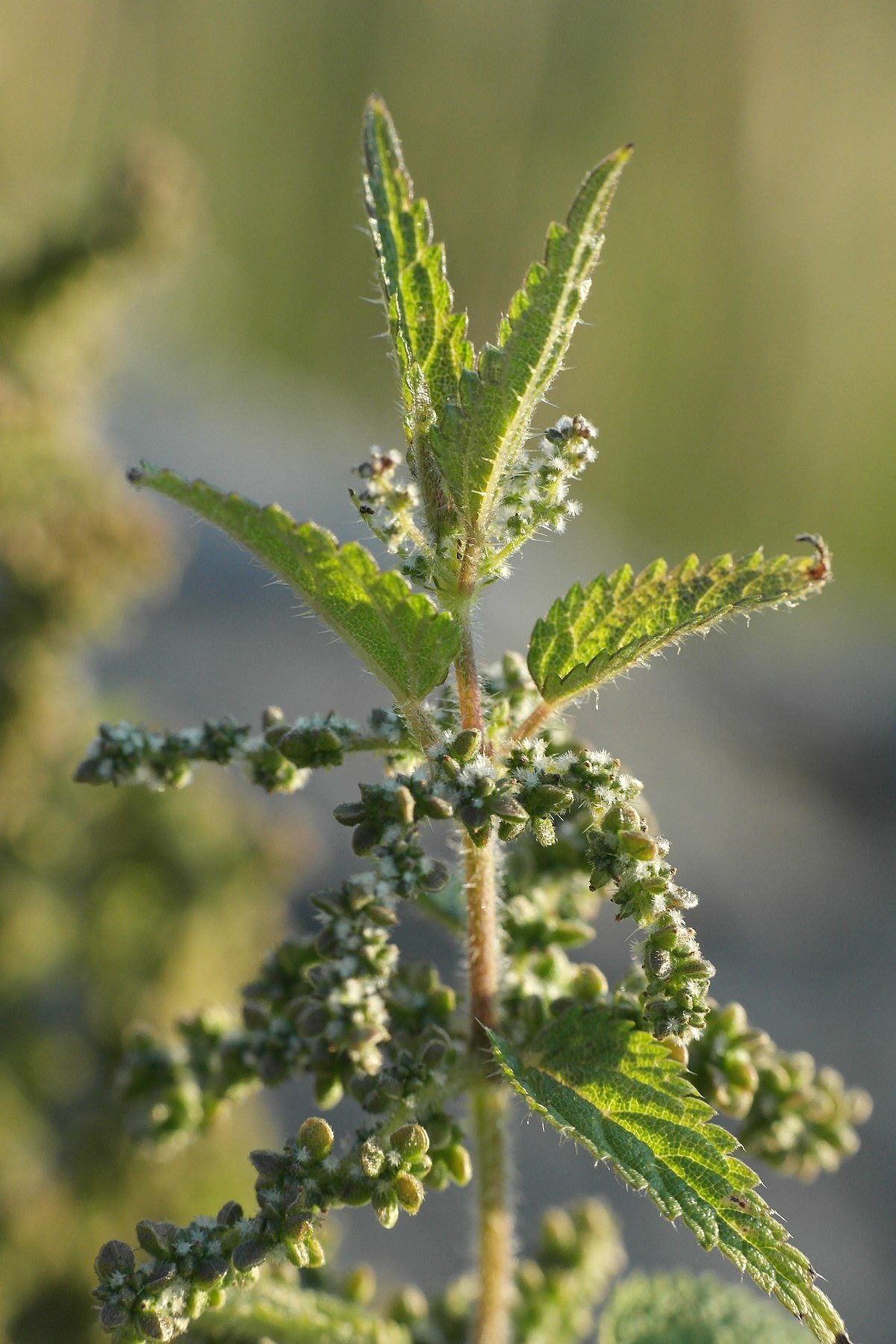
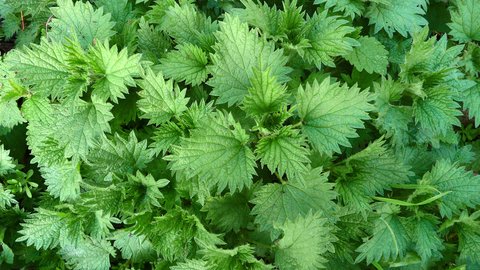
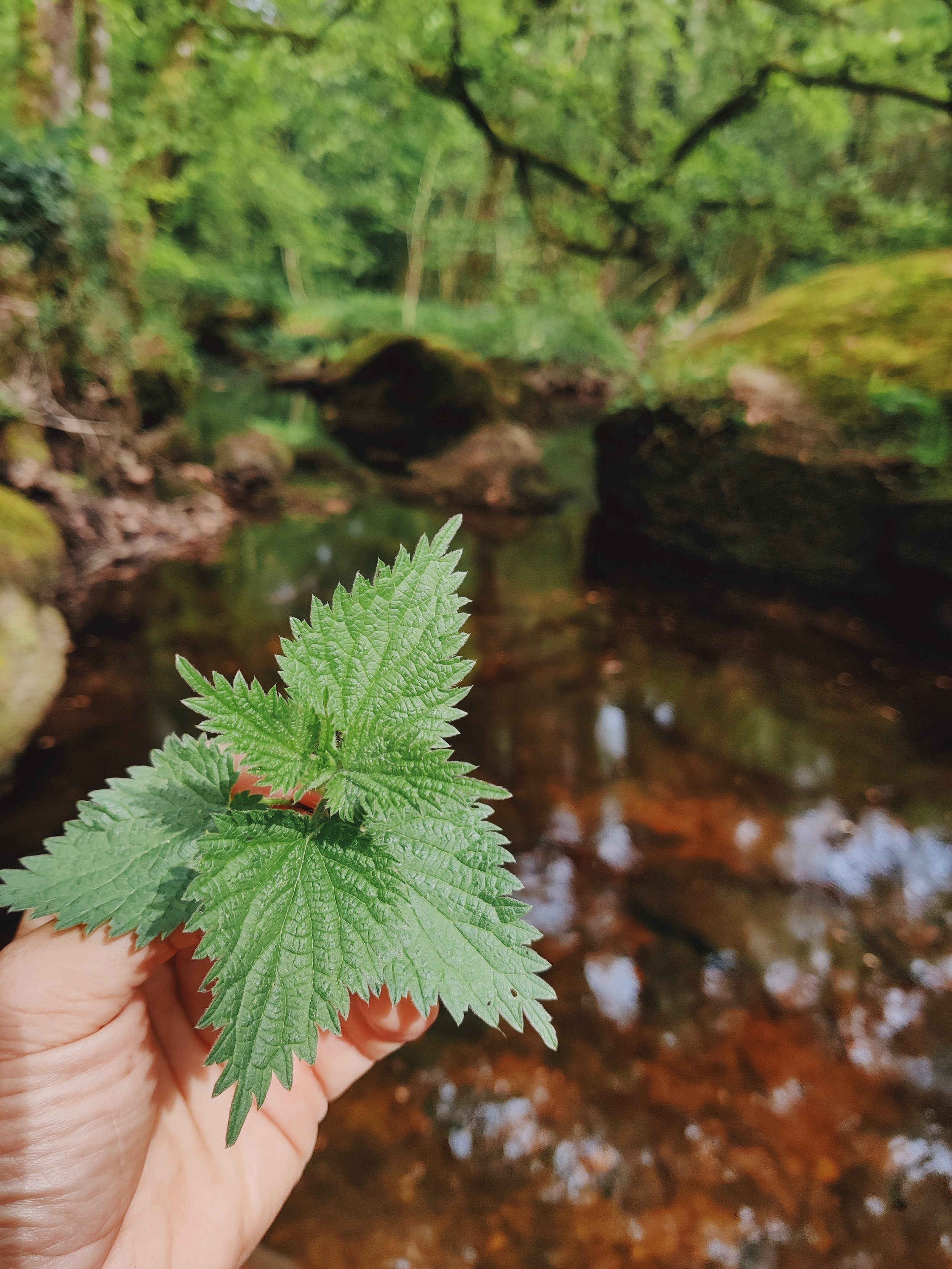
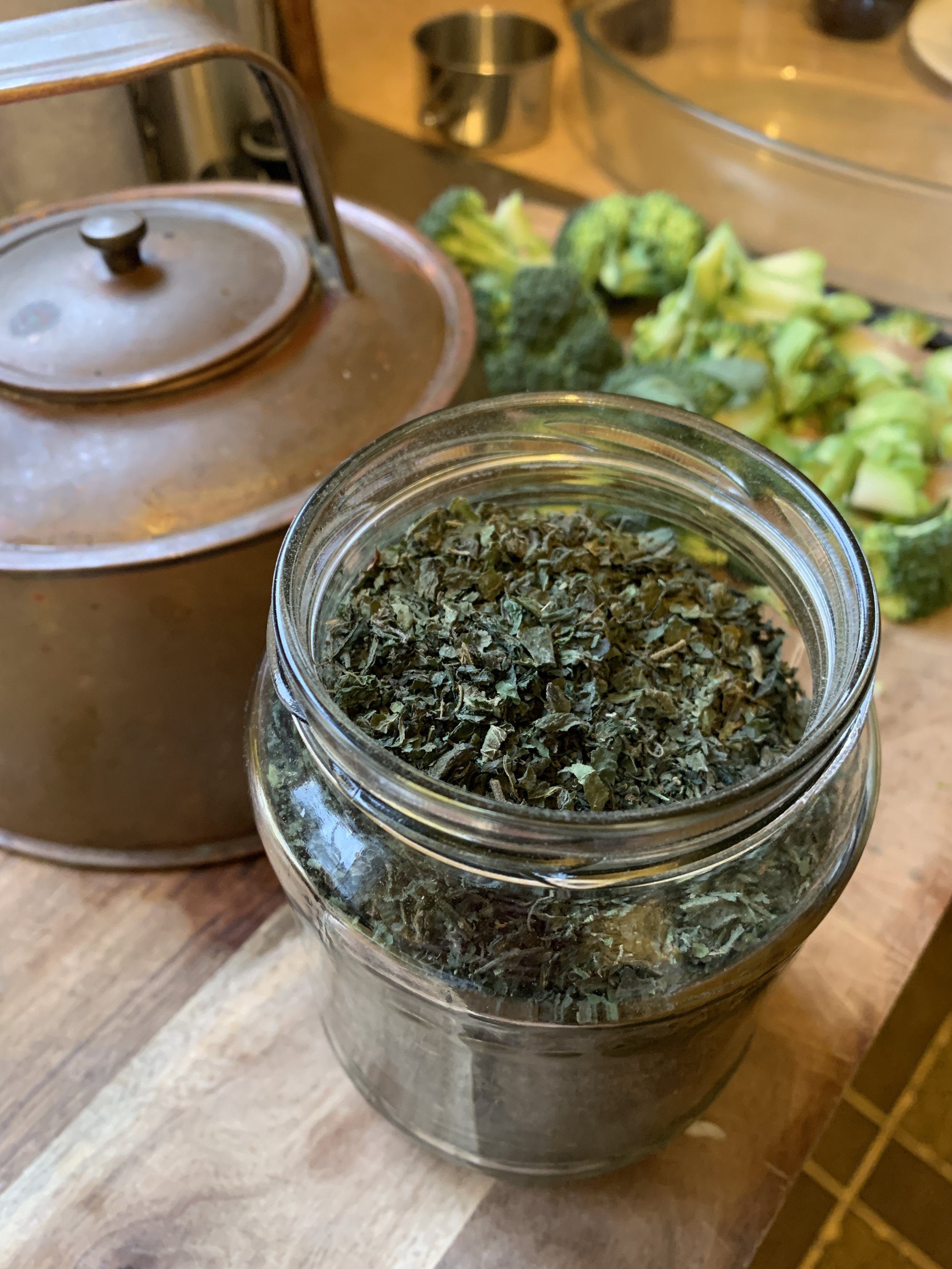
Traditionally used for its fibre of which it has been harvested for thousands of years. Introduced into New Zealand by early settlers who used it for its nutrient and medicinal properties. It grows well in rich, well fertilised soils, near streams in gardens and bush margins. Nettle is well known for its health benefits; containing rich amounts of iron, magnesium, calcium, zinc, potassium, silicone and many vitamins.
How to use it? Entirely safe to consume, either collect it with gloves or grab it in an upwards motion; you may receive a few stings along the way. The stings received have been known to reduce inflammation in arthritis sufferers. Reduce blood pressure and other benefits.
Either dry it to make tea, or steam it like any green vegetable. Don’t worry the stingers will not be effective once cooked. Enjoy!
Dandelion
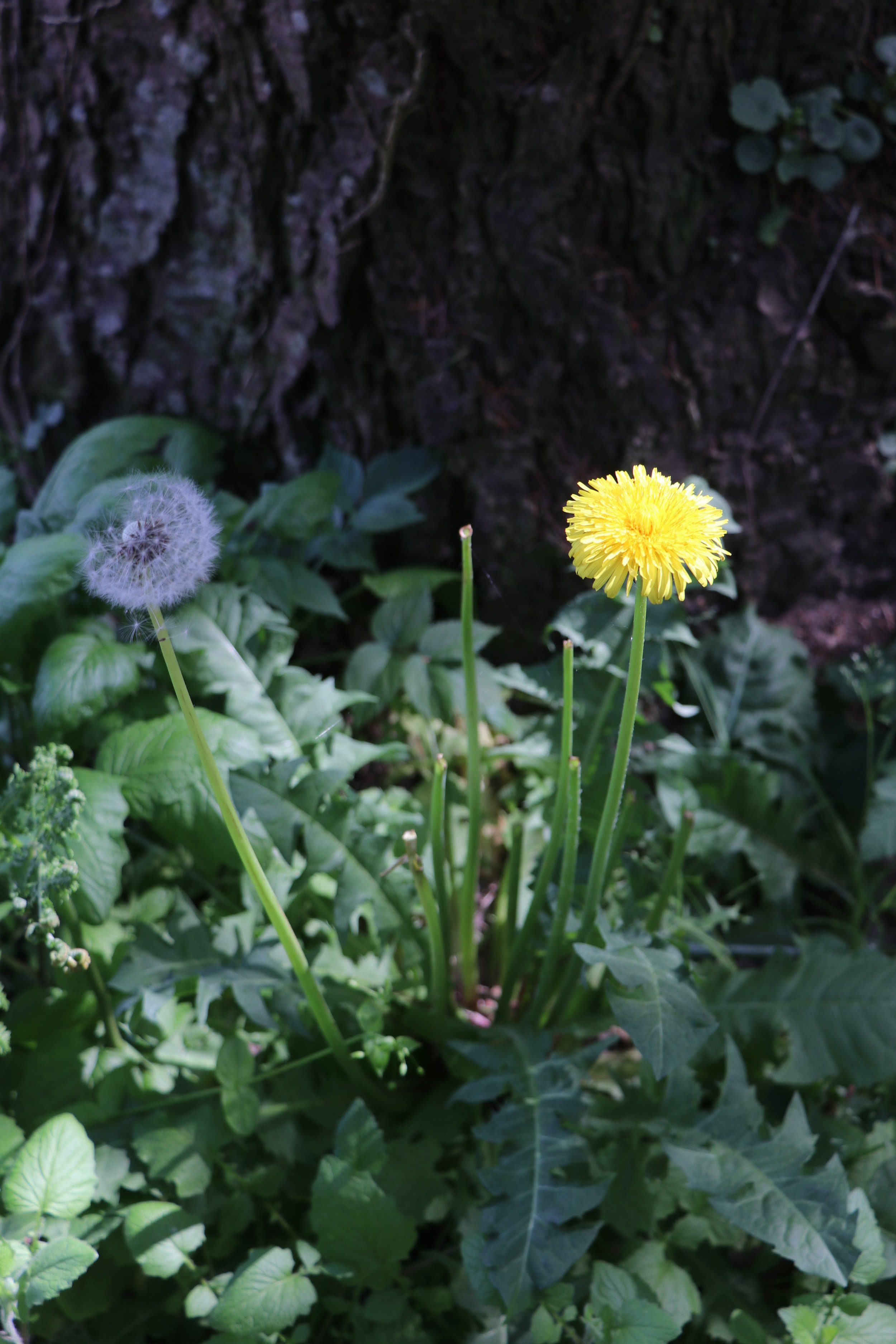
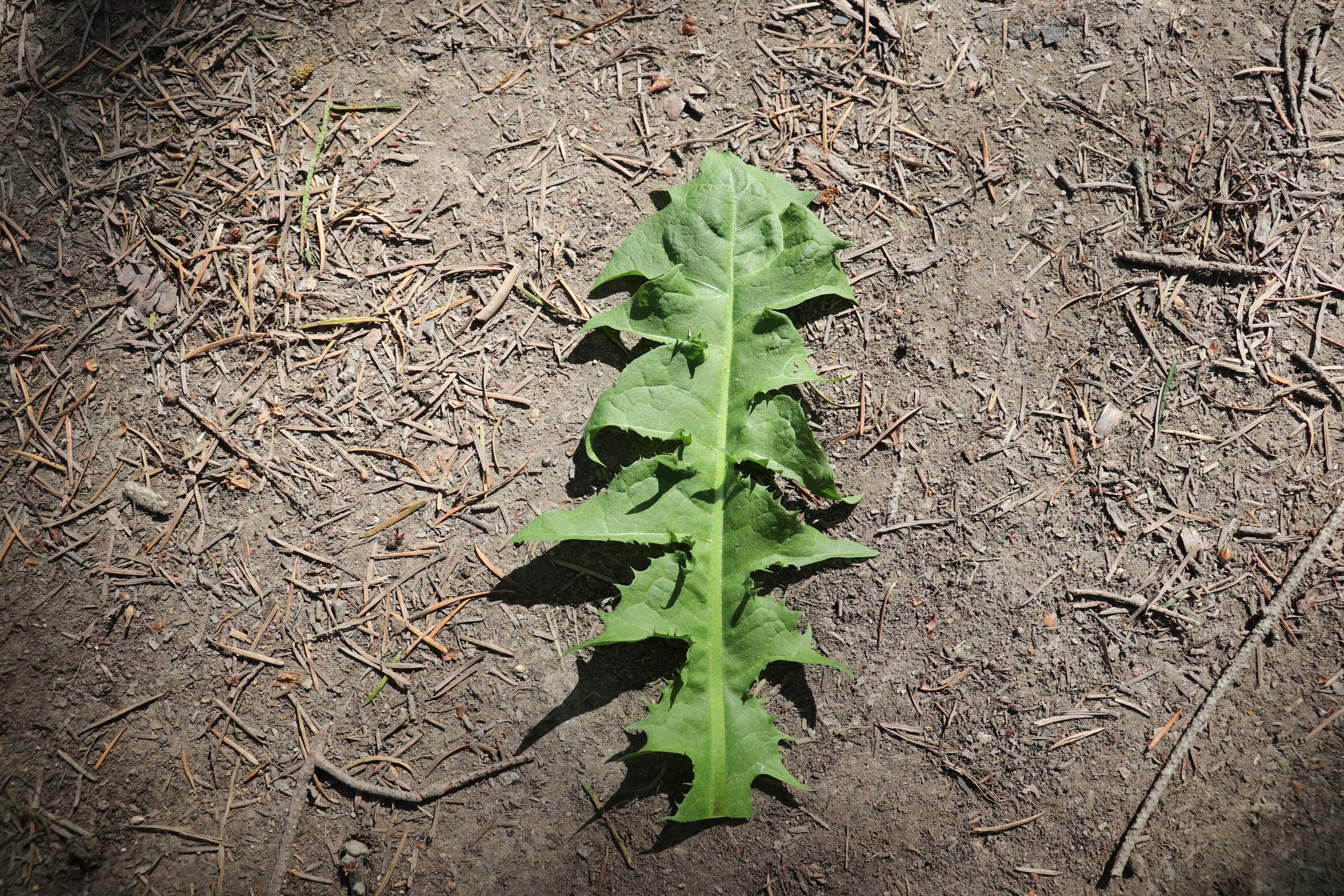
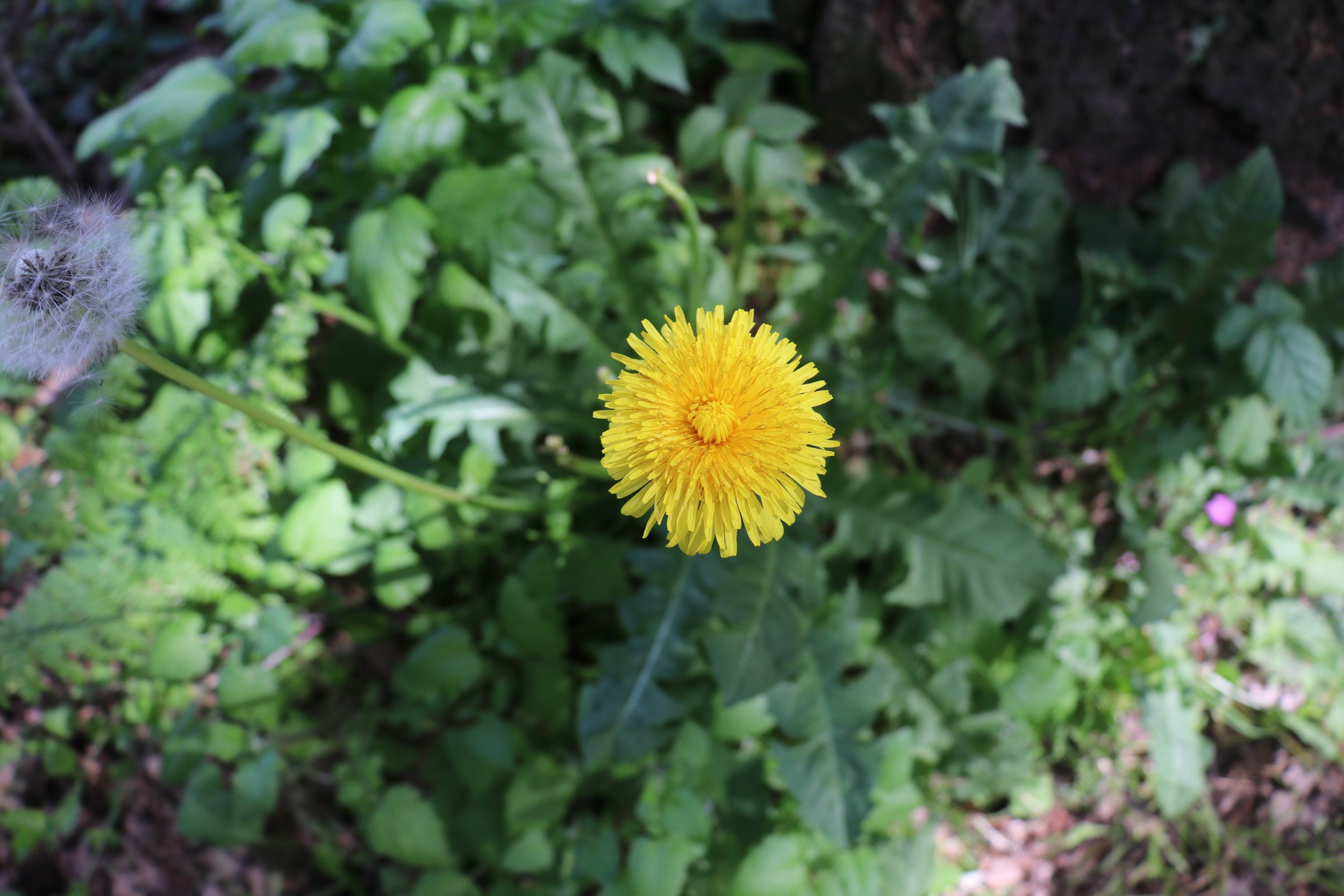
Dandelion has around 30 very similar look-a-likes and this includes Pūhā. This makes it hard to identify. Dandelion is low growing with a deep tap root, a rosette of jagged tooth shaped leaves. It has a smooth hollow stem with a single yellow flower head.
Experiment with dandelion, eaten raw it is bitter but can be cooked like any vegetable.
The roots store a lot of energy in winter so can be dug out, dried and roasted as a replacement for coffee.
An extremely nutritious green, often described as a superfood.
Sow Thistle (Sonchus family) Pūhā
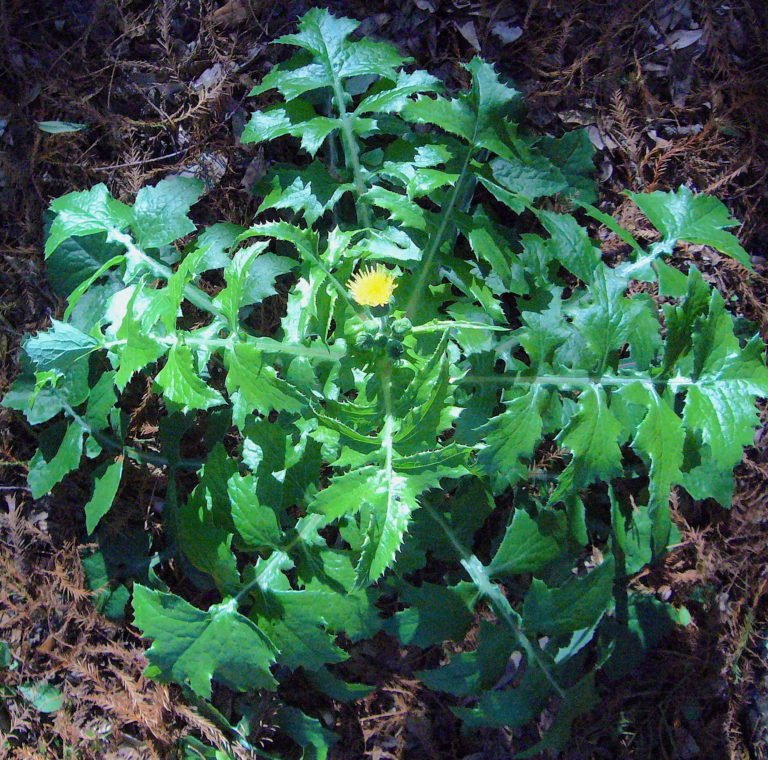


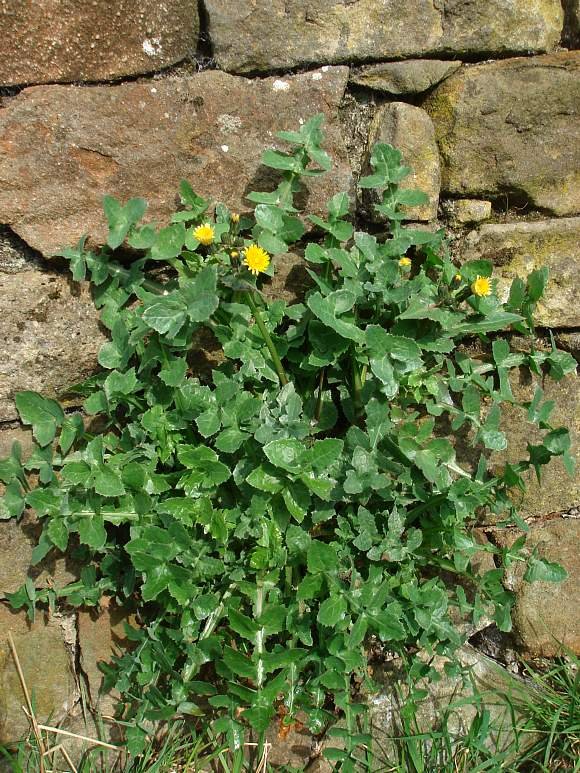
A weed which will establish any time of year on the fridges of your backyard, abandoned areas in town, crops and gardens. A highly nutritious vegetable that contains Vitamins A, B1, B2, Niacin, High levels of Vitamin C. Minerals include; Calcium, phosphorus, iron, magnesium, manganese, sodium, potassium, copper and zinc. Essential fatty acids, carotenoids (antioxidant) and fibre. A significant immunity boosting plant.
After a research conducted by Otago University in 2006, they found pūhā had more than three times the amount of antioxidants as blueberries, recognising them as having some of the highest antioxidant levels in the Western diet. If you eat pūhā and the weeds listed here you can significantly reduce your chances of needing to see a doctor throughout the year. Eat them regularly and daily if possible
One identification tip os to look for the leaf wrapping around the stem.
The guidelines
These are some of the general guidelines of wild food gathering that everyone should know about:
Do not eat anything unless you are without a doubt and 100% positive on its identification. In the process of learning about the plant you must be able to identify all poisonous look a likes as well.
Rule of thirds. Be a kaitiaki (guardian) it is up to you to ensure there will always be enough food.
When collecting plants or mushrooms always leave at least a third behind for its own survival and another third for the next person who visits the area.
Just because a bird eats the berries, does not mean you can. There are many berries out there that will make you very sick.
Please be extremely careful when trying new plants, a little knowledge is sometimes more dangerous than no knowledge. This is due to the ‘over confidence factor’ and can cause misidentification of similar poisonous plants, a common scenario I see very often.
Find a mentor
It is hard to explain in one article the hundreds of possible mis-identification mistakes people can make when starting out on this journey.
If you explained a new plant to me and then asked me to draw it. They may look significantly different.
If you show me a picture, I may well remember. However if you introduce me in person, It will take some time to forget it.
The same goes with foraging; books and learning online are great resources but the best way to learn is to go out with an experienced person to build that foundation.
We run engaging foraging workshops where you can discover the stories behind the plants, their history/ spiritual uses and identification techniques which help set you up with confidence and a solid foundation of knowledge to go forth with.
Warning: This article is given in general guidance. Do not eat any plants unless you have confirmed it 100%, and are without a doubt sure of what you are eating. We take no responsibility for mis identified plants.
We do not condone eating any native trees as apart of your regular balanced diet due to sustainability problems that could arise. Our Native trees are our Toanga, they will provide you food when needed and Rongoa also when required.
I do however recommend getting out and tasting but in very small quantities to learn and preserve this knowledge for yourself and others.
Fill your boots with the introduced wild weeds ( These SHOULD be eaten everyday as they contain so much minerals and nutrients lacking from supermarket foods)
Join us on a workshop to discover this subject in depth including full identification more plants and uses.
Ash
Director / Lead Instructor
New Zealand Survival Academy


